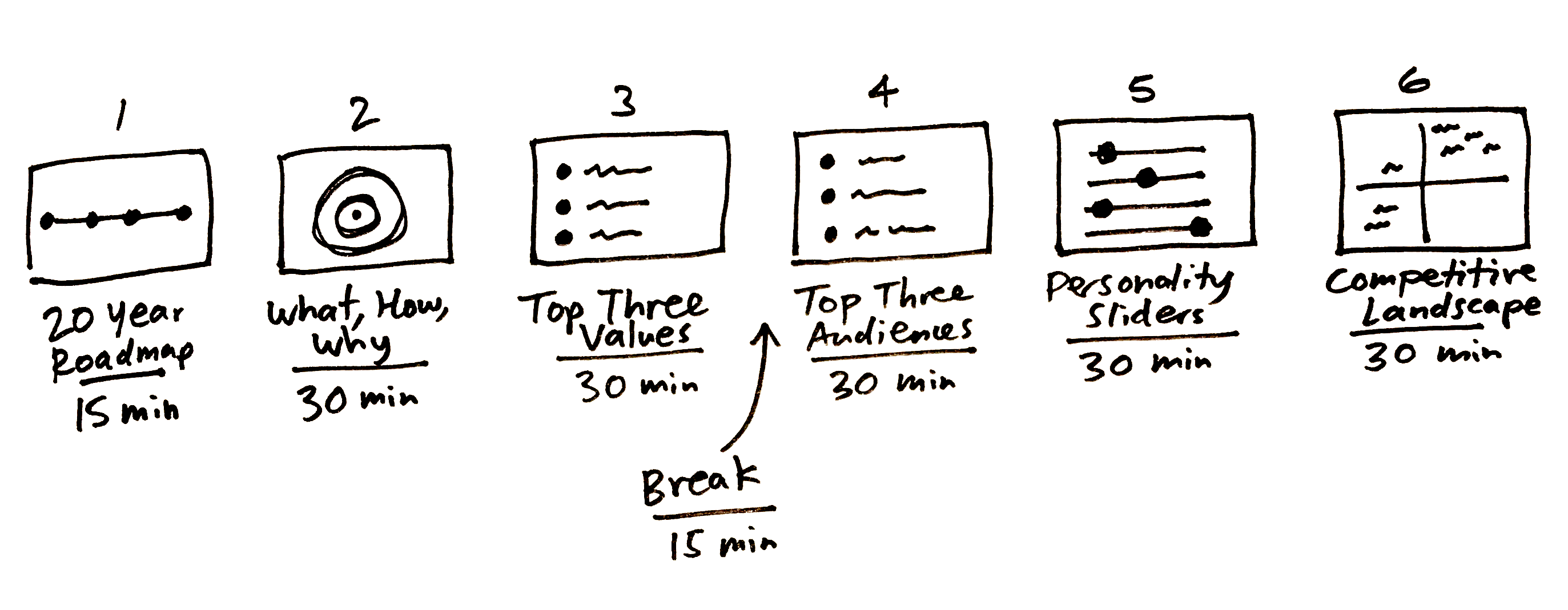Better brainstorming with this hack we stole from Google
How to increase participation amongst your team in brainstorming sessions
Every week during our team meeting we have time set aside for discussion. We talk about our values, how to improve client communication, setting goals or improving our processes.
The idea is to make the company a little better each week. My partners and I could hold these discussions ourselves, but we had two reasons to include the whole team.
Including the team improves buy-in
People are more likely to enact processes they helped to create. Claire Lew is the CEO of Know Your Team, a company dedicated to creating better managers. In her article on building intrinsic employee motivation she discusses how creating choice, "results in a higher quality of decisions, and greater motivation and commitment to the task." The CEO of RedHat agrees.
More people means more ideas
In her article on brainstorming, Anne-Laure Le Cunff lays out a compelling argument for quantity over quality during the brainstorming process. There are prolific creators like Stephen King, James Dyson, Thomas Edison and Pablo Picasso who have created huge bodies of work and are known for a small subset. There have also been psychological studies that indicate that quantity yields quality when it comes to creative work.
By drawing on our whole team we get more ideas and a broader range of ideas.
Or at least... that was our intention. In practice these discussion sessions would typically go something like this:
"So today we're going to talk about transparency. Are we doing everything we can to be a transparent company? Is there anything we could do better? Are we being too transparent in some ways?"
Anddddddddd crickets.

How do you get your team to participate in brainstorming sessions?
It's a question that was driving me crazy.
Every now and then someone would pipe up if something happened to be on their mind. But for the most part, these discussions weren't going anywhere. They felt like a waste of time.
It's not surprising. Thinking on the spot is hard, and speaking up in front of your team (even if you trust them) can be nerve-wracking.
But then we stumbled on the brainstorming methods in the Google brand sprint.

We started using the exercises in consulting sessions with our clients. I noticed that most of the exercises followed a similar pattern.
- quiet reflection
- sharing
- quiet reflection
- voting
- discussion
- decision
In these client sessions, we were seeing great results. Discussion flowed easily and we consistently felt like we were making progress.
So a couple of months ago I decided to apply this pattern to our internal discussions as well. We went from crickets to meetings consistently running long (we now time-cap our discussions).
Here's the specific method we use to encourage better brainstorming with our team.
Step 1 - Ask the question ❓
Try to be as specific as possible and provide context where needed.
Step 2 - Think for 5 minutes 🧠
Provide everyone with 5 minutes to think alone, and write down their answers.
Step 3 - Share your answers one at a time 👐
I find it helps to break the ice if I go first. I then call on each member of the team one at a time.
It's tempting to start debating right away but hold off on discussing. This is a time for ideas, both good and bad. You don't want to shoot anyone's idea down or else they might not share as much next time.
Step 4 - Think for 3 minutes 🤔
Give everyone 3 minutes to consider all of the options and write down their votes quietly.
Step 5 - Share your votes ✅
Call on your team one at a time to share their votes. Depending on the dynamics of your team, it could help if the leader goes last. Although everyone should already have their votes locked in, so you shouldn't sway anything.
Encourage everyone to share more about why they voted the way they did at this point.
Step 6 - Discuss 😻
Now open the table to discussion. Starting with a specific question again helps to get the conversation going. Keep an eye on the clock and cap this at 5-10 minutes.
Step 7 - Decide
At the end of the day, the leader makes the final decision. This reflects the true power dynamics of the company and allows you to cut through groupthink. However, I've found in most cases this is a non-issue. I've hired great people, I trust and respect their opinions. So nearly every time I end up changing my vote slightly to reflect the consensus from the group while organizing their votes and laying out the next steps.
Why does this work?
The method starts by asking a specific question. Asking good questions is deceivingly hard. If your question is too broad, it's hard to come up with anything. Too narrow, and you may miss out on good ideas.
It allows time to think as individuals. One of the typical problems with brainstorming is that the loudest voices win. In many brainstorming sessions, the conversation is dominated by one or two people. But with this method, everyone contributes. And by thinking alone at the beginning of the exercise, you're given time to come up with ideas uninfluenced by your peers.
Finally, it focuses on quantity over quality. Thinking we can be creative in small bursts is largely a fallacy. There's an element of luck to creativity, and the best way to get lucky is to give yourself more lottery tickets.
Want to get your team more involved and drastically improve your brainstorming sessions? Try it out.
